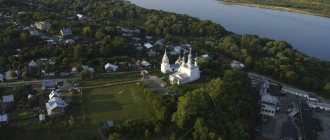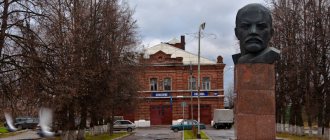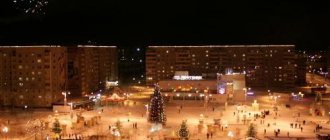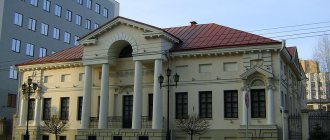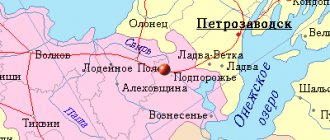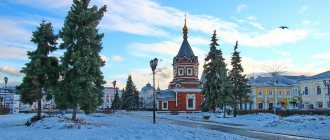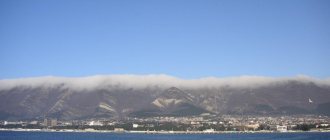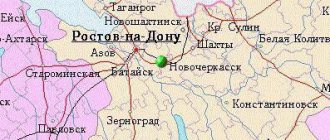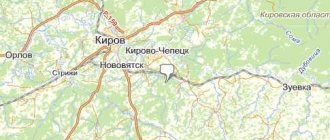Kirzhach is a typical lowland river
The Kirzhach River originates in the Berendeyev swamp, in the Yaroslavl region. It flows through the territory of the Vladimir and Moscow regions and flows into the Klyazma. Kirzhach is very popular among water tourists. This is due to transport accessibility and the presence of attractions on the shore. The local nature is particularly beautiful.
Meshchera kingdom
The Kirzhach River flows through an area called the Meshchera Lowland. The vast forest area spreads over the territory of three regions, so they distinguish, respectively, Ryazan, Moscow Region and Vladimir Meshchera. You will not find mountains in these parts - maximum altitudes range from 113 to 170 meters. Therefore, with a river length of 133 kilometers, the height difference is only 20 meters. The river flow is smooth and unhurried.
The mouth is located near the village of Gorodishchi in the Vladimir region. The Kirzhach flows from north to south. The river freezes in November and opens in early April. During floods, the water rises significantly. The sandy shores give way to hilly ones, and in some places the shore can be very swampy. The riverbed is winding. As a rule, the right bank is high, the left bank is flat.
When rafting, you should be careful, as there are snags, submerged trees and underwater rocks along the way. The width of the channel can vary from 10 to 70 meters. The maximum depth reaches four meters. In its lower reaches, the river crosses a vast swampy plain. In this place the riverbed is replete with oxbow lakes. It is now difficult to believe that the river was once navigable.
In some places the width of the river exceeds 70 meters
Kirzhach was first mentioned in documentary sources in 1852. There is no doubt that it existed before. Back in the 7th century, Finno-Ugric tribes settled on its banks. It is believed that the name of the river comes from the Moksha word “kersh”, which means left. Kirzhach is the left tributary of the Klyazma.
Flora and fauna
There are few fields around the city, but forestry predominates here. Other areas are considered the breadbasket of the Vladimir region.
The dense vegetation of the Kirzhach forests was formed in the post-glacial period. Kirzhach, like the entire region, is considered perhaps the most wooded area in the center of Russia. The common tree species here are pine and birch. Around the city there is a fence of dense pine groves, where walking is useful for the treatment and prevention of any respiratory diseases.
Lingonberries, blueberries and blueberries grow in huge quantities in the pine trees near Kirzhach, and local residents collect and sell them. The city is also surrounded by vast swamps, so blueberries, cloudberries, and cranberries grow here in abundance. There are a lot of swamps here, even in the floodplains of rivers; they are easy to find through the dense, tall thickets of reeds and sedges.
The forests here are mixed, and often old local species are interspersed with artificial plantings made during the USSR. This can be easily seen while walking through the forest.
In the vicinity of Kirzhach, 56 species of mammals, 240 species of birds, 5 species of reptiles, 10 amphibians and 34 species of fish have been recorded.
There are especially many squirrels of different colors in the forests around the city - red, gray, gray-brown. They roam over vast distances throughout the region.
The most common aquatic rodent is the beaver. There are a lot of them here and it’s easy to spot a beaver burrow both from the river and from the shore. There is also a common muskrat, which has lived on the banks of the Klyazma since time immemorial.
Many floodplain reservoirs that do not freeze to the bottom contain reserves of aquatic vegetation - reeds, sedges, reeds, water lilies, pondweeds.
Of the 240 species of birds, only 50 species are sedentary. Taiga bullfinches, waxwings and many other birds fly to the surrounding forests of Kirzhach for the winter.
Along the way
There are four dams on the river - near the villages of Ilkino and Ilinskoye, in the villages of Gorodishchi and Krasny Oktyabr. The destroyed dam can be seen near the Molodyn tributary. Another ruined hydroelectric power station rises on the shore near the village of Fineevo. After the war, in conditions of electricity shortages, collective farms united and built their own power plants. Fineevskaya HPP is one of them.
The city of Kirzhach is located on the river. The settlement was first mentioned in 1328. In the 19th century it was a large craft and industrial center. Among the ancient attractions it is worth noting the Annunciation Monastery. Near the city there is a sports airfield of the same name, where the first group of cosmonauts was trained. The local wooden pedestrian bridge “Tipographic” is included in the Russian Book of Records as the longest in the country. Among the fun attractions are the museums of snacks and platbands, copper and brass, and the museum and park area “Lousy Hill”.
Space city
Kirzhach Airfield
Kirzhach Airfield was opened in 1938. Since 1959, the flight test complex of the Institute of Parachute Engineering has been located here. Since 1960, the first group of Soviet cosmonauts underwent parachute training at the airfield. The city's airfield is always full of paratroopers both in summer and winter. Parachuting competitions take place here, but the sports component is not the whole life of the airfield.
Every Russian parachute or parachute system is tested here. Since the institute's existence, more than 5 thousand aerospace systems have been tested here, including Soviet manned and descent vehicles. Yuri Gagarin said that the road to space begins in Kirzhach.
The first spacecraft provided for the landing of astronauts as simple parachutists. All Soviet cosmonauts were trained here. Even the main street of Kirzhach is named after Gagarin.
Interestingly, the astronauts lived in a building that looked like a log cabin from the outside. Visitors can see the room where Gagarin and Titov lived. Nowadays paratroopers practice here. But the history of space exploration and the first Soviet cosmonauts is not all that the ancient Russian city is famous for. There is no separate cosmonautics museum in the city, and all exhibits related to space history are housed in the local history museum. Interestingly, 15 km from the museum in 1968, the first cosmonaut of the planet, Yuri Gagarin, and his flight instructor Vladimir Seregin crashed during a training flight on the MIG-15.
Kirzhach Museum of Local Lore
There is a separate stand dedicated not only to Gagarin, but also to Seryogin. Letters from the mother to her son Yuri Gagarin and even her gratitude to the Kirzhach cannery for the mushrooms sent are kept here.
This museum houses the works of Sergei Mikhailovich Prokudin-Gorsky, the father of Russian color photography. The project in the museum appeared thanks to Emperor Nicholas II - in 1909 he asked Prokudin-Gorsky to photograph the entire Russian Empire in color. After the photographer's death, his children sold a collection of color photographs to the Library of Congress. And in the Kirzhach Museum of Local Lore, these photographs can be seen in the public domain.
If you leave Kirzhach towards the Gorky highway and drive past the village. Novoselovo, you can get there instead of the death of Yuri Gagarin. On March 27, 1968, the wreckage of the MIG-15 aircraft, on which Yu. Gagarin and V. Seryogin performed a training flight, was discovered 65 km from the take-off site. In 1975, a memorial was built on this site. The monument in the form of a flame escaping from a funnel is unique in the world. This is the third monument to honor his memory.
There are even trees cut down by the falling plane. The clearing left by the plane that caught fire also remains.
Look around
While traveling around Kirzhach, do not forget to look around. There are many rare birds in the river valley. These include black grouse, meadow harrier, and great snail. You will be very lucky if you see a herbalist or fifi - a long-legged bird from the snipe family. One of the rarities is the Apollo butterfly. There are crayfish in the river.
Gifts of local nature
The banks are dominated by birch and aspen forests, where you can pick lingonberries, cranberries, and blueberries. There are mushrooms. Connoisseurs stock up here on medicinal plants – St. John's wort and wild rosemary. Hares, foxes, and badgers live in the forests. Large animals include elk, deer and roe deer. Large birds are represented by black grouse, hazel grouse, and wild geese. In Kirzhach they catch ruffe, pike, perch - a total of forty species of fish. The best places for fishing are Koryazhistaya Shoal, Goat Beach, and Kukushkin's Place.
Climate
The climate of Kirzhach is moderate continental. Seasonality is clearly expressed here - a real Russian winter and almost a Crimean summer. We can say that the geographical position of this old Russian town is extremely advantageous.
Kirzhach in winter
In winter, the icy air of the Arctic blows from the Barents Sea to Kirzhach and despite global warming, the winter here is harsh - the air temperature drops to -40 °C.
For the same reason, frosts are not uncommon in May, destroying the first shoots of fruit trees and vegetables.
But in summer, the warm Central Asian air sharply increases the temperature to +38 °C.
In general, the climate in the city is humid continental with an average annual temperature of 4.4 °C.
Kirzhach is located in the third Volga time zone, where the time should be an hour ahead of Moscow. But despite the time zone, Kirzhach still lives according to Moscow time.
City coordinates on the world map:
56'15.806°C. w. 38' 86.853° east. d.
If you show Kirzhach from the height of an eagle's flight, you will not be able to immediately see the city in the dense green forest. The forest lands here are rich in dozens of species of trees, shrubs, and grasses - there are more than 1 thousand species in the vicinity. It seems that Kirzhach is drowning, that he is lost in the forest.
Adventures from our tourist club in this direction
Hiking – Magical paths of Kirzhach – Vladimir region
Ski trip – Journey to a lost world with a warm overnight stay – Moscow region
All Kirzhach - kayaking Taimen
Economy
The leading enterprises of the city are a tool plant, a plant of automotive and tractor lighting fixtures (JSC ""). Light (garment factory), woodworking (furniture factory) and food (canning factory) industries are also developed. The silk factory, founded in 1932 and for a long time the largest enterprise in the city, after privatization in the 1990s, broke up into small enterprises and ceased to exist.
At the beginning of the 21st century, the Turkish company Arcelik built a plant in the city for the production of refrigerators, washing machines and televisions under the Beko brand.
How Sergius of Radonezh founded Kirzhach
On October 8, the Russian Orthodox Church remembers the repose of one of the most revered Russian saints - St. Sergius (1314-1392), abbot of Radonezh and the miracle worker of all Russia. The monastery he founded acquired fame, which reached all the way to Constantinople. Now the Trinity-Sergius Lavra is the largest Russian monastery, subordinate only to the patriarch. Grand Duke Dmitry Donskoy received his blessing for the Battle of Kulikovo from the Radonezh abbot. Also, not without the help of Sergius, almost all the princes by this time already recognized the primacy of Prince Dmitry. Sergius of Radonezh also founded the Annunciation Monastery, to which the city of Kirzhach owes its existence.
Sergius of Radonezh. Painting by Nicholas Roerich. Photo: ruvera.ru
Founding of the monastery
Wanting to avoid conflict with his brother, Archimandrite Stephen, in 1354 he secretly left the Trinity Monastery on Makovets and went to his spiritual friend, the Monk Stephen of Makhrishch. He did not leave alone, but together with his devoted student Roman. After spending some time in the Makhrishchi Monastery, Sergius of Radonezh, taking a guide, went in search of a place convenient for his desired desert life. He found it on a high cliff near the Kirzhach River. Here he again devoted himself to physical labor and prayerful feats.
Having learned where the Monk Sergius was, his spiritual children began to move to live with him. The Radozhsky abbot built a small wooden church here, which he consecrated in honor of the Annunciation of the Blessed Virgin Mary. After 4 years, Sergius returned to the Trinity Monastery, and left his student Roman Kirzhachsky as abbot of the Annunciation Monastery, who became the first official abbot of the Annunciation Monastery. He fulfilled the commandment of his spiritual father: the monastery became a model of ascetic life for his brethren.
Roman Kirzhachsky. Photo: drevo-info.ru
The date of its foundation is considered to be 1358. Until the end of his life, St. Sergius treated this monastery as his beloved child, and never broke off contact with it, controlling all its affairs. Thanks to the glory of its founder, the Annunciation Monastery enjoyed great fame and attention of Russian tsars, princes and boyars. They gifted it with lands, villages and various lands, so that very soon it became one of the richest monasteries in North-Eastern Rus'.
The heyday of the monastery
By the middle of the 16th century, the Annunciation Monastery was the second of 14 ascribed monasteries to the Trinity-Sergius Monastery. Its abbot, as a rule, was appointed from among the monks of the Trinity Monastery and occupied the second rank after the Trinity archimandrite. 90 monks labored there. The monastery's possessions grew and were located not only in Pereslavl, but also in Dmitrov, Vladimir and Yuryev districts. The monastery had its own peasants, its own fisheries, six water-based flour mills, two salt pans, and income from fairs.
Until the middle of the 17th century, there were three churches in the monastery - Annunciation, Sergievsky and in the Holy Gates (XVI-XVII centuries). In 1656, boyar Ivan Andreevich Miloslavsky erected a new stone church in honor of the All-Merciful Savior next to the Annunciation Church over the graves of his parents. Subsequently, this place becomes the Miloslavsky family tomb. As is known, they were relatives of the first wife of Tsar Alexei Mikhailovich and occupied leading government positions under him. The boyar Ivan Andreevich Miloslavsky himself owned the village of Fedorovsky not far from the Annunciation Monastery.
Church in honor of the All-Merciful Savior, 1656. Photo: russian-travels.ru
Decline and renewal
But in 1764 it was abolished, along with more than half a thousand other Russian monasteries, by the Manifesto of Catherine II on the transfer of monastic properties and the peasants inhabiting them to the state. His property was transferred to the Trinity-Sergius Lavra, the brethren were transferred partly there, partly to other monasteries. Monastic churches became parish churches.
It was from the submonastic settlement that the city of Kirzhach was formed in 1778 by Catherine’s decree.
In the middle of the 19th century, the monastery churches were revived thanks to the ascetic efforts of the Kirzhach families, primarily representatives of the Solovyov trading house. The head of the family, Alexander Solovyov, was the permanent head of the Annunciation Cathedral for 17 years from 1844. He studied icon painting at the Trinity-Sergius Lavra and, together with his son Peter, painted the walls of the Annunciation Cathedral and the Church of St. Sergius of Radonezh, for which he received gratitude from the emperor and the blessing of the Holy Synod. It was the skills of church painting that allowed Pyotr Solovyov to later earn money by drawing patterns on fabrics produced in Bogorodsky district, and in 1849 to establish the production of silk fabrics in Kirzhach itself. After the death of his father, the care of the temples was continued by his eldest son Alexander Solovyov.
Annunciation Monastery at the turn of the 19th-20th centuries. Photo: lubovbezusl.ru
In 1864-1869 A.A. and P.A. The Solovievs erected a majestic temple in honor of All Saints with a high five-tier bell tower not far from the grave of their parents. They also donated expensive church utensils, and a large bell weighing 500 pounds for the bell tower.
Decline and rebirth
During Soviet times, the monastery did not function. In 1932 - 1934, the Church of Sergius of Radonezh was blown up. During the war, the Annunciation Cathedral was used as an ammunition depot; at various times, its premises housed either a sausage shop or a kerosene shop. The city bakery was located in the Church of All Saints.
In 1989, two ancient monastery churches were returned to the Russian Orthodox Church. The parish at the Annunciation Cathedral existed for five years. At this time there was hope to resume the activities of the monastery, but it did not come true.
On July 4, 1995, the Annunciation Kirzhach Monastery was reopened as a convent.
The first nuns of the newly opened monastery were two novices of the Holy Dormition Convent in the city of Alexandrov. Within 20 years after the start of the revival of the monastery, the Annunciation Cathedral was restored. A new church was built in its basement, consecrated in honor of the Venerable Roman of Kirzhach and receiving a shrine with his holy relics under its canopy. A new chapel stood over the renewed source of St. Sergius.
Chapel over the spring of St. Sergius of Radonezh. Photo: oldboy.icnet.ru
Above the monastery and the city, just like a century ago, stands the restored bell tower of the Church of All Saints, and the temple itself, freed from foreign outbuildings, acquired new domes and was crowned with crosses. The architectural monastery complex was organically supplemented with a new cell building and a house for the goalkeepers. The monastery recently reopened its central Holy Gate to the world.
